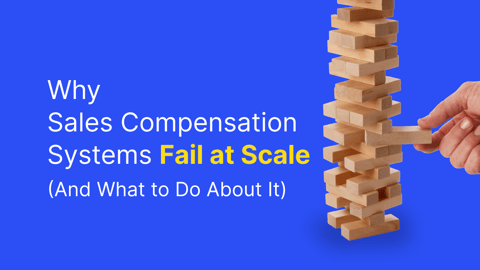This is part of a series of interviews with B2B revenue leaders. This interview is with Jon Miller, Chief Product Officer at Demandbase.
Note: at the time of the interview, Jon was working at Engagio as their CEO & Co-Founder.
Who are you and what do you do?
I'm Jon Miller, the CEO and co-founder of Engagio.
I've spent much of my entire career in the marketing technology space and most recently I was co-founder and original CMO at Marketo for almost ten years.
So Marketo started in back in 2005, I'm curious to know the story of how that happened...
I was working at Epiphany, which was arguably the leading marketing technology company of the internet bubble era and it ended up getting sold in 2005.
I had to figure out what to do next, so I started having conversations with Phil Fernandez (who was the President and COO at Epiphany). He and I shared a common vision that there ought to be a new kind of marketing technology company. One that leveraged software as a service to make powerful, enterprise-class marketing tech, but that was easy-to-buy, easy-to-own, and easy-to-use.
After we left Epiphany he and I spent some time trying to figure out exactly what all these ideas meant and decided to go start Marketo at the end of 2005.
Marketo is a beast in the market today, how did the mission and vision of the company change as time went on?
It was pretty consistent. It always had the common idea of great marketing technology that is easy-to-buy, easy-to-own, and easy-to-use. That idea never changed in terms of the vision of Marketo.
We didn't know exactly what segment of the market we were going to serve when we got started. We let customer demand take us into the world of B2B marketing and what's become known today as marketing automation.
If anything has evolved from Marketo over the years, it’s an expansion of the number of markets it can serve. As opposed to just B2B demand generation it’s added in the ability to serve enterprise and consumer marketers. The core vision never changed but the number of markets served has.
Now with Engagio, you're back to where you were 10+ years ago as a co-founder of a startup. How has the amount of technology in today's market changed things for you?
It's made it easier to start a company and get funding. Back in 2006 investors didn't understand marketing technology or believe that there were big companies that could be buillt in the space.
If you look at the proliferations of marketing technologies today, there's really two kinds of companies. There are companies that sort of serve as point interactions solution and companies that are trying to serve as platforms. Marketo, Eloqua, and Hubspot... those are the platform companies. Companies that serve as point interactions; they do something interesting in marketing, and they all plug into the core platform. Big companies, the kinds I want to start, are going to be on the platform side.
Up until now, there hasn't been an account-centric based platform, that’s where the opportunity is for Engagio. A platform that can really support the needs of marketers that are going after named accounts as opposed to waiting for whatever inbound leads happen to come in.
The concept of account based marketing is not a new one, but it seems like in the past couple of years the popularity has risen dramatically… what's the reason for that?
There're a couple key reasons.
The first reason why account based marketing has really taken off is the saturation of the inbound model. Back in the early days of Marketo, all I had to do was write a blog post about a topic and we'd rank on the top page on Google for that idea. Now, so many people are doing content marketing, inbound marketing, and demand generation that the marginal return of incremental investments is declining. What's happened in the last couple years is a re-birth of outbound. Outbound prospecting goes hand-in-hand with an account-centric lense.
The second reason is because while the idea always made sense, the way it was practiced up until recently wasn’t seen as being scalable. With the emergence of new technologies like predictive technologies, account based retargeting advertising vendors, sales development automation tools, and so on, there's been this emergence of a more scalable style of the account based approach.
Those two factors have combined to spark the whole rebirth of account-centric thinking.
A term that you've coined at Engagio is Account Based Everything... why is it so important to have teams like customer success, sales development, and sale onboard?
Actually, account based everything was originally used by an analyst firm that studies this space called TOPO, but I think they saw the same thing that we see. The phrase 'account based marketing' is a misnomer because what we're talking about requires alignment and orchestration between marketing and sales, and even account management and customer success.
Read anything out there about account based marketing, and almost always it's talking about alignment between marketing and sales. What TOPO saw (and what we see) is that we should stop creating silos. The naming is perpetuating the silos, so instead of having account based marketing in one spot, and account-based sales development in a different spot, let's embrace the idea with a bigger tent and bring everything in with account based everything.
Like you alluded to, a lot of companies see it purely as a marketing activity. What's the number one problem that they will run into without those other teams involved?
Account based marketing without alignment from sales is just a bunch of marketers sending direct mail packages and buying ads to accounts that sales might not even care about. That's clearly not the most efficient use of your time and resources. Similarly, account based sales development without coordination from marketing is a bunch of junior people choosing what accounts they want to target and creating their own campaigns to reach out to them.
Here's the analogy I like to use: imagine a football team trying to move the ball down the field. You wouldn't ever staff the team with eleven wide receivers because they’d get crushed. Similarly, you wouldn't field a team with eleven linemen because the ball wouldn't go anywhere. The idea is to have different players on the field serving different roles and when they are all working together, the ball moves forward.
When is the right time for companies to develop an account based everything strategy?
It has less to do with timing and more with the kinds of deals that your company goes after.
If you're selling $10K annual contract value deals, it's just not going to be cost effective for you to use account-centric strategies. It's just not worth the time and investment in the individual account. Now, if you're selling $250K average contract value deals, then it's definitely worth it.
You could be a brand new startup with no customers, but you know that you're going after a targeted list of companies, you should do account based everything. Similarly, you could be a big, mature company selling high volume deals and account based everything doesn't make sense for you.
It's all about the average contract value and complexity of your deals. If your annual average deal size is sub 10K clearly you should fish with nets, larger than 50K you should clearly fish with spears, and everything in between will probably be some sort of blend.
What are some common mistakes that you see companies making surrounding their account based strategy?
The first one we already talked about which is to tackle an account-centric activities solely as a marketing strategy.
Another big mistake I see is people tackling account based marketing using only a display advertisement strategy. This is where you have your list of target accounts and you buy ads that only are shown to people who work at your target accounts. It’s a popular account based strategy because it's easy. You spend some money, turn it on, and boom! — you get to go to your boss and say you're doing account based marketing. That's not sufficient though. I don't know about you, but I don't click on ads… I ignore them.
Advertising can be part of an account based strategy, but the big mistake is just doing that advertising and thinking that you've got an account based strategy in place. There are probably better places to start your ABM efforts.
What are your outbound prospecting strategies at Engagio and can you pass along any best practices?
It's all about being account-centric.
I get so many bad prospecting emails every week, some even have typos and spell my name wrong. That's just terrible when you think about how sloppy that is. Even ones that manage to get the basics right, most are just generic templates that are not specifically relevant to me or my business.
The thing that we try to do at Engagio is recognize the fact that there are not that many people we want to talk to at each of our target accounts. So, considering we're talking about a pretty small population, why would we ever want to send them a generic prospecting message. In today’s world, if you send something crappy, it's too easy to hit the spam button.
We do our best to be relevant and specific to industry, company, and even individual interests. The more we can do that, the more effective we are at prospecting.
What are the best channels to use with an account based strategy?
If you're really going to reach out and connect with a human, it’s almost always going to involve a human doing something on your side. Sending a personalized email, making a phone call, or some sort of social touch. The best is when you combine all three of those in conjunction with marketing air cover and support.
For me, you will never get me on the phone by calling me, but if you leave me a good voicemail that might increase the chance that you'll get a reply on your email. The social touch further increases the chances of connection over one of the other channels. It's the synergy and the orchestration of the channels together that work the best.
Are there any channels that you'd want to avoid in an account based strategy?
A bad channel is any channel that is not personalized, and therefore is irrelevant. There are channels that are certainly more usable for fishing with nets than fishing with spears.
For example, this blog, it could be a great channel for driving traffic to your website but it’s extremely hard to use a blog to target specific accounts.
I'm interested in hearing your thoughts on the intersection of sales and marketing, and where marketing ends and sales begin for you at Engagio...
The traditional model tends to be a handoff from marketing to sales development to sales. In this account based world, you’ve got to have an orchestration with all three departments.
When you're trying to prospect into an account, marketing can play a role, sales development can play a role, and even the account executive can play a role. The models much less one of the handoffs, and much more one of intertwined, orchestrated interactions across the whole cycle.
Like you said, part of that is to have sales, sales development, and marketing all strongly aligned with one another. What are some ways to get those teams on the same page?
That's a big question. One of the best things you can do is just embracing an account-centric strategy.
A big part of the reason marketing and sales hasn't gotten along is because you've got sales thinking about accounts and marketing thinking about leads. If you can those two different teams to sit down and agree on the target accounts to go after—to me—that is the foundation to alignment.
It will require you to rethink sales and marketing metrics. A lot of companies live in a world where deals are either generated by sales or marketing, and only one team gets credit for it. That credit model is the wrong one to use in this account based world where you've got all the teams working together at every point.
Team structure is a big part of this, I've heard you talk about 'agile' or 'scrum' teams in the past. Can you explain that idea further and how it can be effective for some companies?
Scott Brinker from ChiefMarTech probably talks the most about agile or scrum marketing.
The advantage of it is that marketing is cross-functional in terms of the different disciplines you need. With an agile methodology, it lets you dynamically allocate marketing resources to different areas at different times. Maybe you've got a big trade show coming up and lots of energy needs to go there. Next you’ll have a new website launching and energy needs to go there.
An agile methodology naturally reflects the dynamic way a marketing department works.
Do you have any resources you'd recommend for readers?
Well, I've got to recommend our book: The Clear and Complete Guide to Account-Based Marketing. It normally costs $20 but you can get it off the Engagio website for free. It's 124 pages and I'm biased because I wrote it, but I really do think it's the best guide to everything account based that's out there today.



